|
The Preservation Alliance of West Virginia is proud to introduce the first four recipients of the newly established Fund for Historic Schools Grant, as well as four recipients of Saving Historic Places Grants. Recipients of The Fund for Historic Schools Grants include:
Round two Saving Historic Places Grant recipients include:
“The goal of both the Fund for Historic Schools and Saving Historic Places Grant (SHP Grant) is economic development. For the schools program, special attention is placed on vacant schools because of the serious negative effects their vacancy and deterioration have on rural communities. While the SHP Grant helps to save endangered historic places. In all cases, these projects have high levels of community support, demonstrable reuse plans, and potential for positive economic growth in disadvantaged communities. We look forward to being able to contribute subgrant awards to the rehabilitation of these historic buildings, and we would like to thank our funder, the National Park Service, for making this possible through a Paul Bruhn Historic Revitalization Grant.” - Executive director, Danielle Parker About the Round Two Saving Historic Places Grant Projects: Tyree Tavern, an historic inn and tavern that was occupied at times by both Confederate and Union troops, was constructed c. 1800 and independently listed on the National Register of Historic Places. This project has been awarded $12,000 for structural beam replacement work. Friends of Wheeling’s Hughes House restoration project will receive $10,000 for window restoration. The nonprofit organization is working to save the historic structure which is an important piece of the North Wheeling National Historic District streetscape. Kerns Fort in Morgantown is a settler’s cabin built in 1772 that served as a fort during early colonization and housed militia during the Revolutionary war. The building, listed on the National Register of Historic Places, has been awarded $15,000 for a new roof to prevent water intrusion. The former United Brethren Church, a Gothic Revival style brick church built in 1873, is a contributing structure to Buckhannon’s Central Residential Historic District. Adaptive reuse of the building will bring creative arts endeavors to the district. This project has been awarded $11,817 for window stabilization and repair. In 2023, PAWV developed the Fund for Historic Schools, a subprogram of the Saving Historic Places Grant Program and won a $750,000 Paul Bruhn Historic Revitalization Grant from the National Park Service to support the program. The Fund for Historic Schools Grant is a competitive grant program designed to encourage economic development through the renovation and preservation of certified historic school buildings in rural West Virginia communities experiencing high levels of poverty while saving these meaningful community landmarks for generations to come.
About the Fund for Historic Schools Grant Program Projects: The Rupert School building project has been awarded $275,000 for roof and window replacement. The former school building was built in 1942 and decommissioned in 2019. Not wanting to lose the building to neglect, the community rallied to find a new use for the school. Woodlands Development Group has purchased the Rupert School building and plans to redevelop it as a health clinic and affordable housing. Calhoun County High School is in the process of being redeveloped into a community center improving health, education, and economic outcomes for nearby residents. This project, spearheaded by The 1982 Foundation, will receive $275,000 for window rehabilitation and replacement work. Bluestone School was an African American high school in Bramwell whose architectural plans were produced by master architect Alex B Mahood. The schoolhouse is a contributing structure to Bramwell Additions Historic District. This project is slated to receive $65,000 for window rehabilitation. Waiteville School, a one-story classic schoolhouse topped with a cupola and bell, was built in 1950 and is individually listed on the National Register of Historic Places. Waiteville Community Center, Inc. will receive $50,000 for the installation of storm windows and flooring rehabilitation work so that the building can serve the community as a hub for gatherings and as an emergency warming center. Dr. Lyn Guy, former Superintendent of Monroe County Schools, advocates for saving meaningful, but defunct, school buildings from neglect and demolition and instead, putting them to good use: “The Waiteville School is one of those cherished places, where a small community now has a community center, dedicated organizations, and many, many volunteers, who hold it dear.”
0 Comments
Tams, WVa. – West Virginians are celebrating the addition of the historically-significant New Salem Baptist Church to the National Trust for Historic Preservation’s list of America’s 11 Most Endangered Historic Places for 2024 – an annual program that raises awareness about the threats facing some of the nation’s greatest treasures. The New Salem Baptist Church in Tams (Raleigh County) serves as a physical reminder of the important contributions of Black coal miners to the coal industry in the United States and is one of the last remnants of the coal company town of Tams, as well as one of few remaining buildings tied specifically to the history of Black coal miners in West Virginia. It is only the second site in West Virginia to be added to the prestigious 11 Most Endangered List, now in its 37th year, which has recognized over 350 other sites since 1988. The New Salem Baptist Church is part of the culturally-diverse Tams mining camp constructed beginning in 1909 to house Gulf Smokeless Coal Company workers. Coal companies often intentionally recruited a diverse workforce to minimize labor organizing, including European immigrants, local farmers, and Black Americans moving north in search of employment, and Tams was no different. At the height of coal mining efforts in the 1920s, Tams had a population of around 1,250, and during a time of segregation, the Gothic Revival Church was constructed in 1921 after the Black Baptist congregation under the pastorate of Rev. Burton Linwood Ziegler asked coal company owner, William Purviance Tams to build a church for them. Typically coal companies controlled the land and all buildings in the coal camp, so the congregation had to rely upon the coal company owner to the build them a church. Membership at the church peaked at 350 members and has dwindled since the coal mines closed in the 1960s and the last residents left Tams in the 1980s. According to the U.S. Department of Labor, by 1920, over 26% of all mine workers in central Appalachia were Black, however, their story is underrepresented in national historic preservation efforts. Sherrie Hunter, the Director of Marketing & Education for Raleigh County Solid Waste Authority and whose father was the milkman for Tams, teamed up with the Preservation Alliance of West Virginia, the statewide nonprofit dedicated to historic preservation, to change that by nominating the property to the 11 Most Endangered List after their success in having the Church nominated to the National Register of Historic Places in 2023. 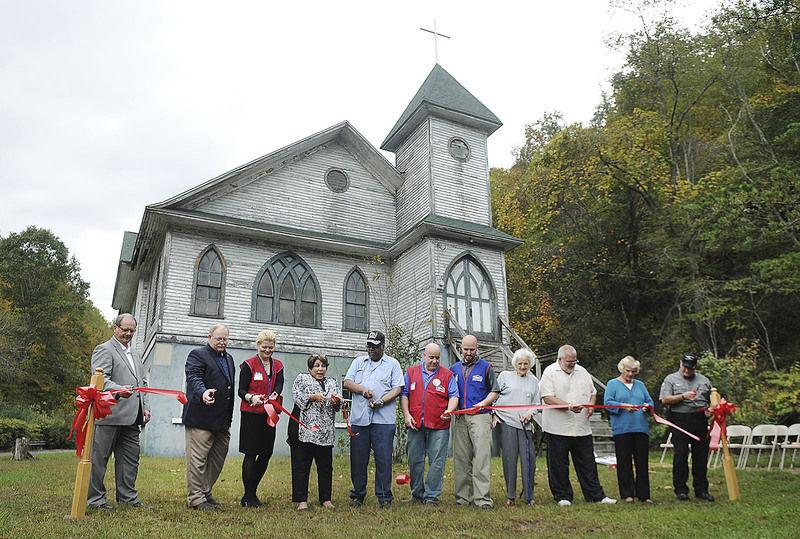 2014 photo including volunteers: Joe Carter, vice president United Mines Workers District 17, Jerry Massie, United Mine Workers field representative. Kim Blankenship, Lowe’s, Sherrie Hunter, project coordinator, Donald Cook, pastor, Shawn Mains, Lowe’s, Michael Giles, Lowe’s, Harley Cox Bonds, Phyllis Rose, Tom Cox and Mitch Barley. Photo: The Register-Herald Sherrie, also a Councilwoman for the City of Beckley, began working to preserve the church in 2011 after meeting its former Pastor of over 25 years, Reverend Donald Cook, who passed away in 2022 and also worked at the Raleigh County Solid Waste Authority. The church began falling into disrepair and Sherrie started working closely with Rev. Cook and Queenie Schoolfield, the oldest member of the congregation, to fundraise for repairs. To date, they have raised $16,200 from local supporters to replace the roof and repair the soffit and fascia, $5,000 from the Raleigh County Commission and $5,000 from the National Coal Heritage Area. Funds are still needed to make critical repairs to the windows and doors. Donations are currently being accepted through a GoFundMe at https://www.gofundme.com/f/new-salem-baptist-church-tams-wv. Although the Church has stood for over 100 years and community support for its preservation is very strong, the building needs more upkeep and repairs than the small congregation can currently handle. More funding and partnerships are needed to fully preserve the church and ensure it can remain part of community life for years to come, as recognized by Carol Quillen, the President & CEO of the National Trust for Historic Preservation who said about the Church’s addition to the 11 Most Endangered List, “Preservation is at its heart about community, and that is abundantly clear for the New Salem Baptist Church. This small but mighty congregation and their committed local allies have worked tirelessly to uphold the church’s unique West Virginia legacy. We hope that this designation will help attract resources and new partnerships to support preservation of the church and a broader awareness of the stories it tells about the often-overlooked Black history in Appalachia coal mining.” The Preservation Alliance of West Virginia (PAWV) announces the opening of its application period for its Fund for Historic Schools Grant to fund pre-development, development, and architect/engineer costs for the preservation of certified historic school buildings. PAWV has $665,000 available for the Round 1 application period, which will close at 5:00 PM on Friday, March 1, 2024. PAWV intends to award 5 - 10 grants ranging from $50,000 - $300,000 by May 2024. Grant application materials are available for download at https://www.pawv.org/savingplacesgrant.html. Call 304-345-6005 if you need assistance downloading the application materials.
The Fund for Historic Schools Grant is a competitive grant program designed to encourage economic development through the renovation and preservation of certified historic school buildings in rural West Virginia communities experiencing high levels of poverty. When a school closes and is mothballed or under-utilized, it becomes subject to blight and a magnet for illegal activities. The vacant building acts as a burden on the school district, which must still pay for maintenance, security, and insurance. Communities across West Virginia want to see these special places preserved. PAWV has witnessed communities coming together to save and repurpose their former schools. This grant program will support those efforts and open the door to other historic preservation incentives and private investment. PAWV is the statewide nonprofit organization dedicated to historic preservation in the Mountain State, and the nonprofit created the Saving Historic Places Grant Program in 2019 to provide funding that helps communities save the places that matter most to them. In 2023, PAWV developed a special subprogram called the “Fund for Historic Schools” and won a $750,000 Paul Bruhn Historic Revitalization Grant from the National Park Service, Department of the Interior, to support the program. PAWV was one 13 subgrant programs totaling $9.7 million in 12 states to receive this prestigious grant, which supports economic development through the preservation of historic buildings in rural communities across the country. These grants mark the fifth year of funding for the program honoring the late Paul Bruhn, executive director of the Preservation Trust of Vermont for nearly 40 years. This is the second year PAWV has received a grant award under the program in which State and Tribal Historic Preservation Offices, Certified Local Governments, and nonprofits from across the country were eligible to apply for funding to create a subgrant program to fund multiple preservation projects in their rural jurisdictions. Invitation to Bidders Wheby's Grocery Roof Restoration Part of - L.G.C. - Phase 1 Princeton, West Virginia Sealed Proposals for the roof restoration of the former Wheby’s Grocery will be received by the Owner at the second floor conference room of the Princeton Railroad Museum, 99 Mercer Street, Princeton, WV 24740, on November 30, 2023, at 11:00 A.M., local time. Bids will be opened publicly and read aloud. An apparent low bidder will be established from this process. Contracts for this Project will be awarded to the lowest, best qualified (type of experience, history of work on similar historic structures, references) and most responsive bid that reasonably meets all the specifications and qualifications further enumerated in the Construction Documents.
The project consists of the removal of existing roof elements, the restoration of other roof elements mainly terra-cotta copings, brick parapet restoration, and the installation of new EPDM roofing. All work will comply with The Secretary of the Interior’s Standards for the Treatment of Historic Properties. Refer to Specification Section 01 11 00 - Summary of Work, for a more complete description of the work. Electronic Plans and other contract documents shall be obtained by Prime Bidders only from the office of Johnson+Bailey Architects P.C., 100 East Vine Street, Suite 700, Murfreesboro, Tennessee, Attn: John Trail, Project Architect, phone 615-890-4560 starting on November 2, 2023. Prime Bidders are required to obtain contract documents and register as a bidder with the Architect. All documents will be dispersed in electronic PDF format. Large format printing of documents will be the bidder’s responsibility. Bids from Contractors not registered with the Architect as a plans holder will not be opened. A Pre-Bid Conference will be conducted at the site 125 Mercer Street, Princeton, WV on November 13, 2023 at 1 pm, local time. Attendance at the Pre-Bid Conference is highly recommended, but is not a requirement for bid submittal. Individual drawings, specification sections, and/or complete sets of plans and specifications and other bid documents may be obtained by Material Suppliers, Subcontractors, and general Contractors from the following: Dodge Data & Analytics, www.construction.com 877-784-9556 ConstructConnect, www.constructconnect.com 800-364-2059 Contractors Association of West Virginia, www.cawv.org 304-342-1166 Bidders shall be licensed General Contractors as required by applicable laws of the State of West Virginia. Funds for this project are provided by the Preservation Alliance of West Virginia as awarded by the National Park Service’s Paul Bruhn grant program. All work must be approved by PAWV and the NPS prior to payment. All applicable Federal, State and local rules and regulations apply. Each Proposal shall be accompanied by a bid bond in the amount of 5% of the bid. The bond is required as a guarantee that, if the bid is accepted, a contract will be entered into. A performance bond and a labor and material payment bond in the amount of 100% of contract sum, issued by a bonding company licensed in the State of West Virginia and acceptable to Owner, will be required of successful bidder to guarantee faithful performance of work under the contract (see Supplement to General Conditions of the Contract). In the event the Bidder to whom the Contract is awarded fails to execute a satisfactory contract and bond, they shall be eliminated and shall forfeit their bid bond, and shall be liable for any loss occasioned to the Owner because of such failure. BY: JOHNSON + BAILEY ARCHITECTS, P.C. FOR: RiffRaff Arts Collective, Inc. - Lori McKinney 869 Mercer Street Princeton, West Virginia 24740 The Preservation Alliance of West Virginia (PAWV) is pleased to welcome Greg Coble to its Board of Directors. Coble’s appointment to the Board was finalized during PAWV’s recent membership meeting in Lewisburg, WV. Mr. Coble brings a wealth of knowledge to PAWV from his roughly three-decade career at the National Trust for Historic Preservation, where he strengthened and fostered the development of state and local preservation organizations across the nation.
Coble, of Shepherdstown, served in various capacities at the National Trust, including Senior Vice President of Business & Finance, Vice President of Administration, Chief of Staff, Director of Human Resources, Director of Budget & Planning, and Director of Program Development. His business acumen and passion for historic preservation will undoubtedly prove to be a valuable asset to PAWV. Members of the Preservation Alliance of West Virginia’s Board of Directors and staff are pleased with the appointment of Coble: “We are excited to include Greg's fresh perspective as we tackle new projects,” notes Danielle Parker, Executive Director of PAWV. “PAWV is expanding, and we are able to do so under the guidance of a knowledgeable Board of Directors. Greg is a welcomed advisor as we begin the process of renovating the historic Arthurdale High School into the state's Historic Preservation Center and advocate for historic preservation across the State of West Virginia.” New Salem Baptist Church, a historic Black church in Tams, West Virginia, has been added to the National Register of Historic Places. The church is the sole remaining building in the Black coal camp community established at Tams and is also a physical reminder of the once-bustling coal town’s racially segregated past. The congregation consisted of Black miners and their families who resided in the northern section of Tams, while white and recent European immigrant groups lived in separate areas.
The Gothic Revival style church was built in 1921 after the board of trustees of the congregation approached W. P. Tams, Jr., who owned the company town, requesting that a church be built for them. Tams obliged and provided the funding for the construction of the church. The congregation was able to repay Tams in 1928 and received a clear title to the property. Unfortunately, a reversion clause in the deed reportedly states that the parcel will revert to ownership by the present Western Pocahontas Land Company should it cease to be used as a house of worship. The church building currently serves a small congregation dedicated to the continued preservation of its built history with admittedly limited resources. Calls for its preservation have been publicly discussed through local news media for several decades, and in 2016 the Preservation Alliance of West Virginia listed the church as a West Virginia Endangered Property. In 2021, the Preservation Alliance of West Virginia received a grant from the West Virginia State Historic Preservation Office to conduct a National Register nomination. PAWV is delighted to report that as of 2023, the New Salem Baptist Church is listed on the National Register of Historic Places. We're proud of the work the Preservation Alliance of West Virginia accomplished in 2022! Take a look at the report below or download the .PDF document.
PAWV received 32 applications requesting over $2.8 million during the Saving Historic Places Grant application period of December 8, 2021 to March 18, 2022. Seven projects were selected totaling $488,008.53 in grant awards (detailed below). Most of these projects have already published requests for quotations (RFQs) from qualified contractors. 1. Arthurdale School Buildings, Arthurdale (Preston County) Amount Received: $65,175.28 Arthurdale Heritage, Inc. received funding to stabilize the exteriors of the 3 historic school buildings on the Arthurdale campus. This includes roof repair, drainage systems, gutter installation, mothballing windows and doors, sidewalk repair and brush removal. Project funding will secure, stabilize and mothball the buildings to prepare for their adaptive re-use. Pictured below are two of the school buildings. 2. Cold Metal Building, Wellsburg (Brooke County) Amount Received: $84,790.10 The Business Development Corporation of the Northern Panhandle (BDC), a nonprofit organization, received funding for the stabilization of the Cold Metal Building. Funding will be used to repoint brick, infill holes, and rebuild certain areas of the building. The BDC is working with the local community on a master plan for the structure that involves reusing it for a commercial space. 3. New River Grocery Building, Hinton (Summers County) Amount Received: $108,810 The City of Hinton received funding to install a complete EPDM roofing system, including the insulation board, gutters, downspouts, and accessories. The proposed use of the New River Grocery Building will be to immediately incorporate it as an extension of the Freight Depot event center, a space used by nonprofit organizations, as well as to relocate the Railroad History Museum to this space. 4. Logan House, Beverly (Randolph County) Amount Received: $30,000 Rich Mountain Battlefield Foundation received funding to repair a hole in the roof of the Logan House, replace timbers in the roof and upper floor that have been compromised by a fire, and replace rotting boards. This is a first step in saving the currently vacant building. 5. Pink Library, Lewisburg (Greenbrier County) Amount Received: $34,425 The Greenbrier Historical Society received funding for emergency repairs to the roof drainage, masonry, and windows on the Pink Library, also known as the 1834 Supreme Court Library. The goal of the project is to fully restore the building into a heritage tourism attraction. 6. Wheby’s Grocery Store, Princeton (Mercer County) Amount Received: $102,808.15 The Riff Raff Arts Collective, a nonprofit organization, received funding for stabilization and interior renovations of the Wheby’s Grocery Store building. Funding will be used for roof replacement, interior repairs, rehabilitation of all windows and doors, restoration of all hardwood floors, and upgrades to the installation system. The future use of this vacant building is the Lonnie Gunter, Jr. Center for Culture and History. 7. WV School for Deaf and Blind Dairy Barn (Hampshire County)
Amount Received: $60,000 The Town of Romney received funding for emergency repairs to the roof on the WV School for Deaf and Blind Dairy Barn. The adaptive reuse of this vacant building has not yet been determined, but goals are for the barn to be reused for recreational or entertainment purposes. Hello everyone! My name is Jamie Billman and I am so pleased to be joining as PAWV’s newest Preservation Manager! I am originally from Pennsylvania, but I have been living in West Virginia since 2018 and I have really fallen in love with the state and its history. I served two years with PAWV's AmeriCorps program at the Old Hemlock site and most recently with the Weston Historic Landmarks Commission, both of which were immensely influential on me. I am a recent graduate from WVU’s public history program and I am so excited to continue my career in historic preservation with PAWV! In the past I have specialized in oral history projects and the preservation of African American history and historic sites. Most recently I was able to continue working to that goal by documenting the historically Black section of the Weston Old Hill / Arnold Cemetery using ground penetrating radar and also completing an accompanying oral history project on African American education and the Weston Colored School which was funded by a WV Humanities Council mini grant. I have been able to attend several hands-on preservation workshops during my time with AmeriCorps and I am so excited to be able to help continue to bring that knowledge to future AmeriCorps members. One particularly special moment for me was to meet and work with Bob Yapp of “About Your House” fame, who came to Weston to work with PAWV and the Weston HLC on the masonry restoration of a small two room brick office building in the historic downtown.
Preserving West Virginia’s historic resources is a passion of mine and I am forever grateful to be given the opportunity to work the Preservation Alliance - a nonprofit that specializes in just that. Last week, the West Virginia Legislature passed legislation that improves the 25% State Historic Tax Credit (HTC) in West Virginia, and it is now on its way to the Governor's desk.
House Bill 4568 (known as Phased Rehabilitations of Certified Historic Structures) achieves multiple goals such as:
If signed into law by Governor Justice, this legislation will become effective on July 1, 2022. What this means for West Virginia is that completing HTC projects just got a little simpler. The three-part application for the state and federal HTCs (which when combined total 45%) will be a more fluid process when working with the West Virginia State Historic Preservation Office and the National Park Service because the agencies will now follow the same procedural rules, thus minimizing paperwork requirements. Equally as important, removing the limitations on allocations and guarantees of historic tax credits will make it more secure and improve investor confidence when undertaking both larger and smaller projects. This is a major win for West Virginia! These provisions increase the Mountain State’s attractiveness from industry-based development firms that specialize in HTC-backed projects, in addition to making the program more user-friendly for individuals wanting to undertake smaller projects. Neighboring states have more restrictive programs, making West Virginia a very investor-friendly state for HTC projects in the mid-Atlantic region. For instance, Maryland has a 20% state HTC that is capped at $3 million per project with a $9 million annual cumulative cap per fiscal year. Pennsylvania and Ohio both have a 25% state HTC, but they have $5 million annual cumulative cap per fiscal year. HB 4568 was sponsored by Delegates Jason Barrett (R-61), Eric Householder (R-64), Erikka Storch (R-03), Vernon Criss (R-10), Paul Espinosa (R-66), Daniel Linville (R-16), Joe Ellington (R-27), Ruth Rowan (R-57), Clay Riley (R-48), Dianna Graves (R-38), and John Hardy (R-63). The Alliance appreciates their support and would also like to thank the leadership and policy expertise provided by the Abandoned Properties Coalition and their long-term dedication to seeing West Virginia’s state historic tax credit improved. The Preservation Alliance of West Virginia is the statewide, grassroots nonprofit dedicated to historic preservation. The Alliance has been working as a member of the Abandoned Properties Coalition since 2016 to improve the state HTC to include the provisions outlined in HB 4568. For inquiries regarding usage of the West Virginia commercial HTC, contact the West Virginia State Historic Preservation Office’s Tax Credit Coordinator, Meredith Dreistadt at [email protected]. |
News and NotesCategories
All
Archives
May 2024
Subscribe to our mailing list to receive e-news updates on historic preservation news and events in West Virginia.
|
Get Involved |
Programs |
Contact UsPreservation Alliance of West Virginia
421 Davis Avenue, #4 | Elkins, WV 26241 Email: [email protected] Phone: 304-345-6005 |
Organizational Partners:
© COPYRIGHT 2022 - PRESERVATION ALLIANCE OF WEST VIRGINIA. ALL RIGHTS RESERVED.





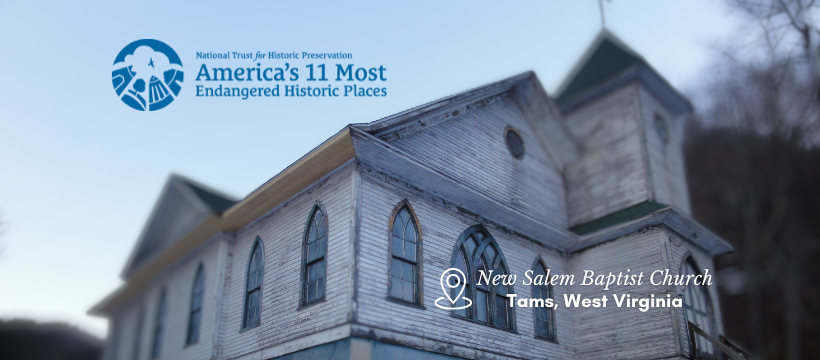
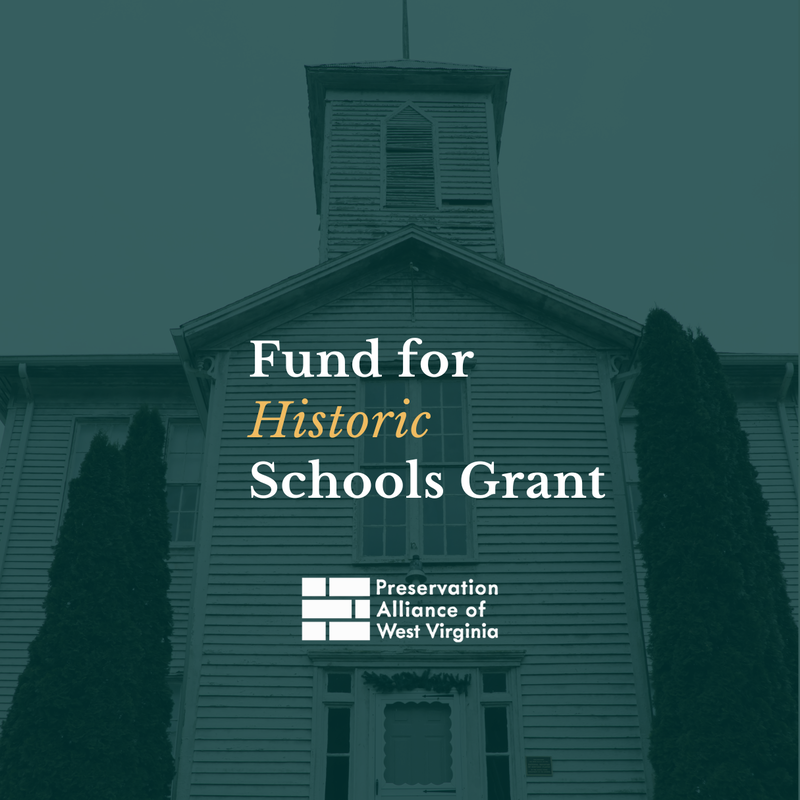
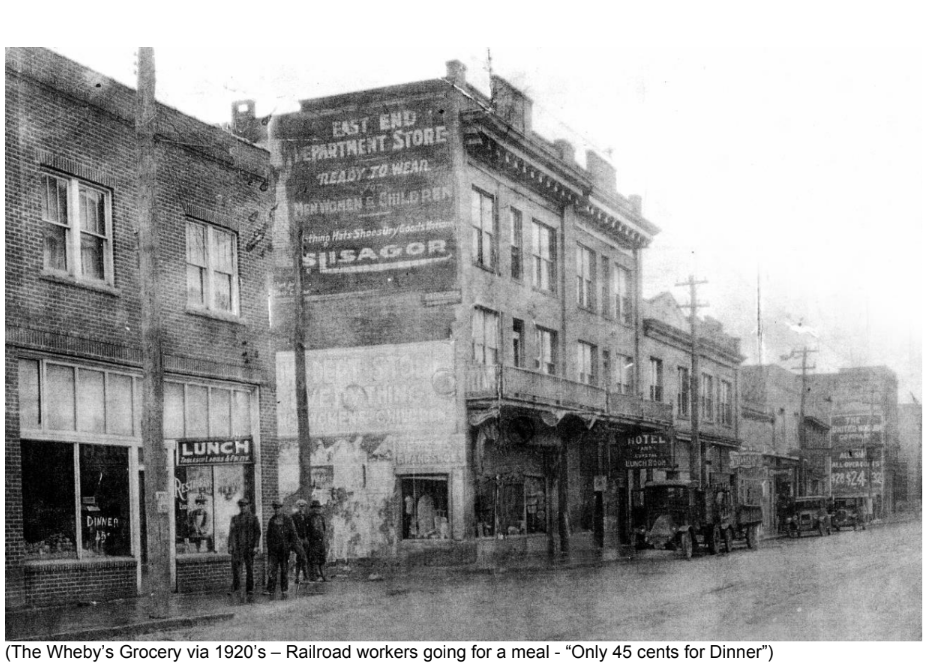


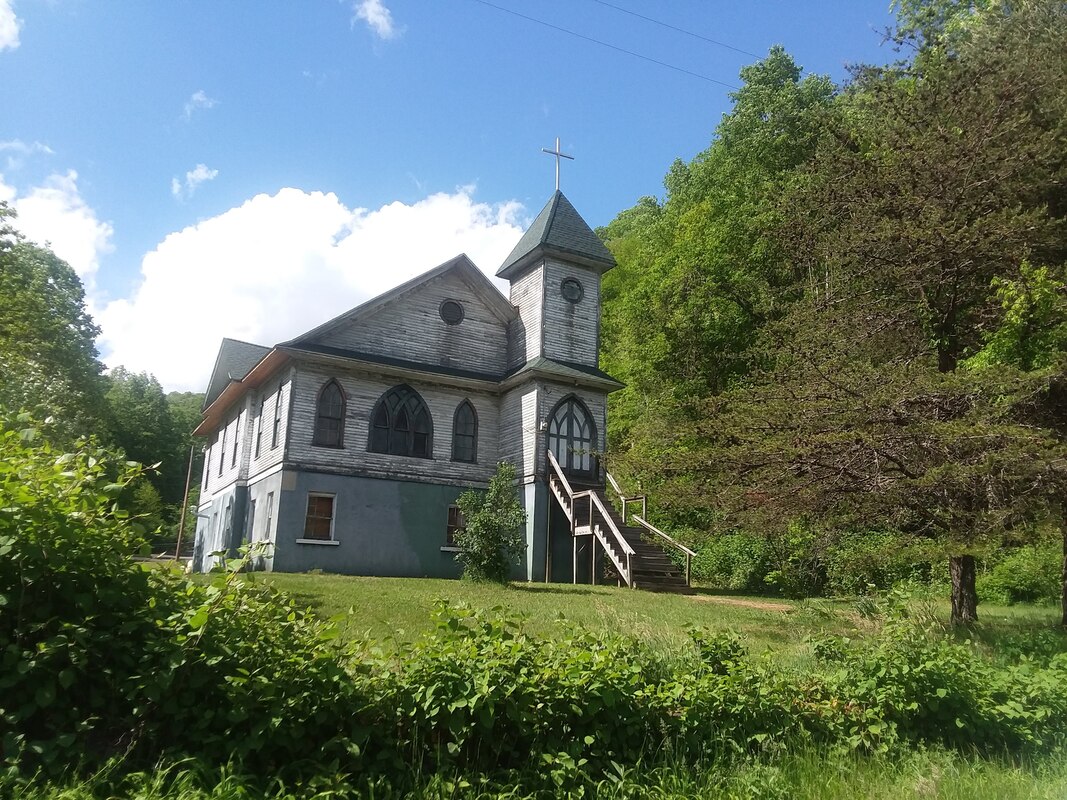
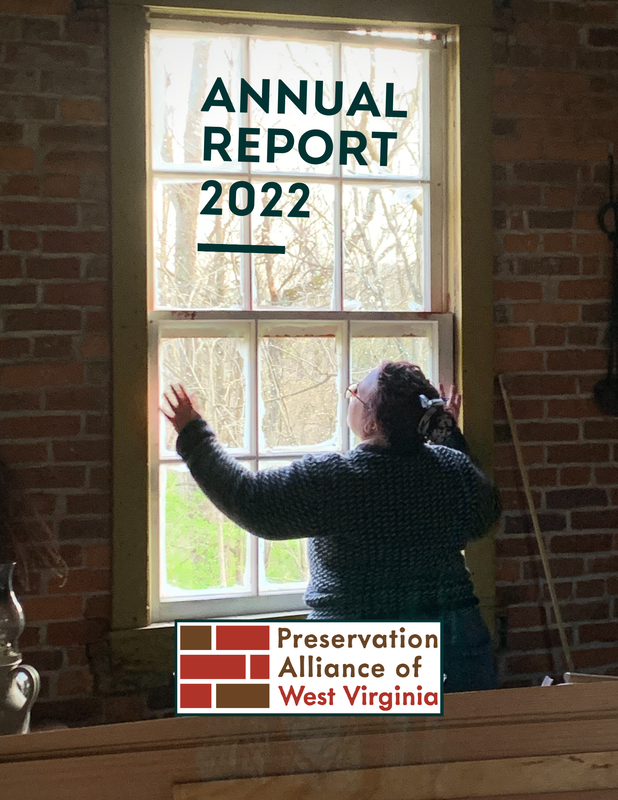
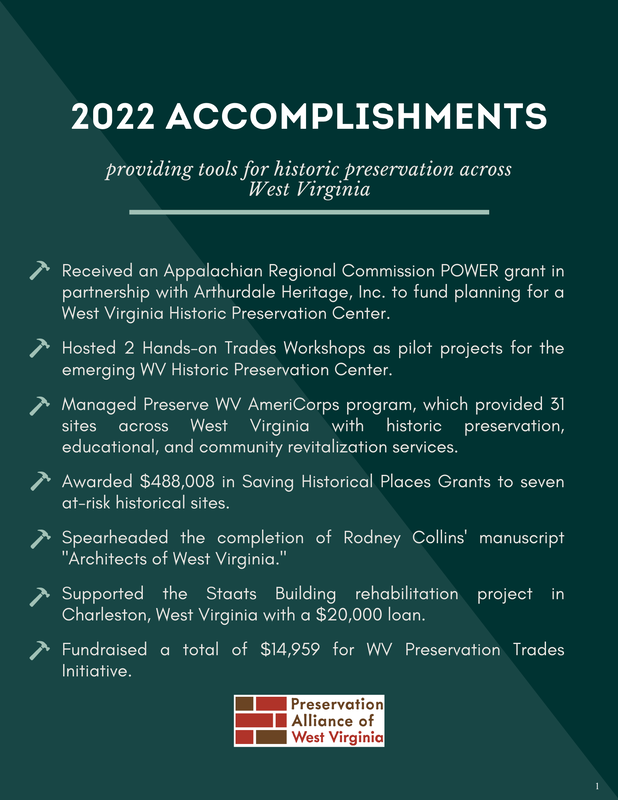
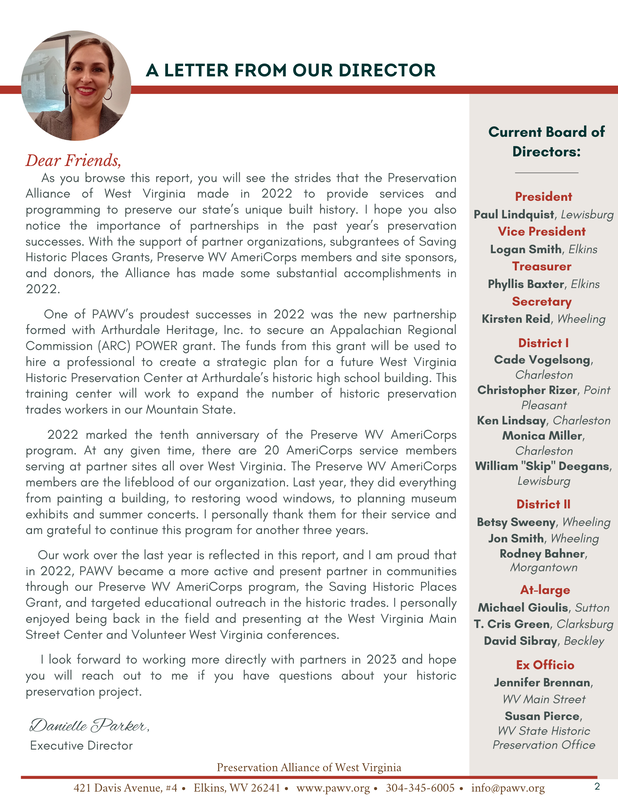

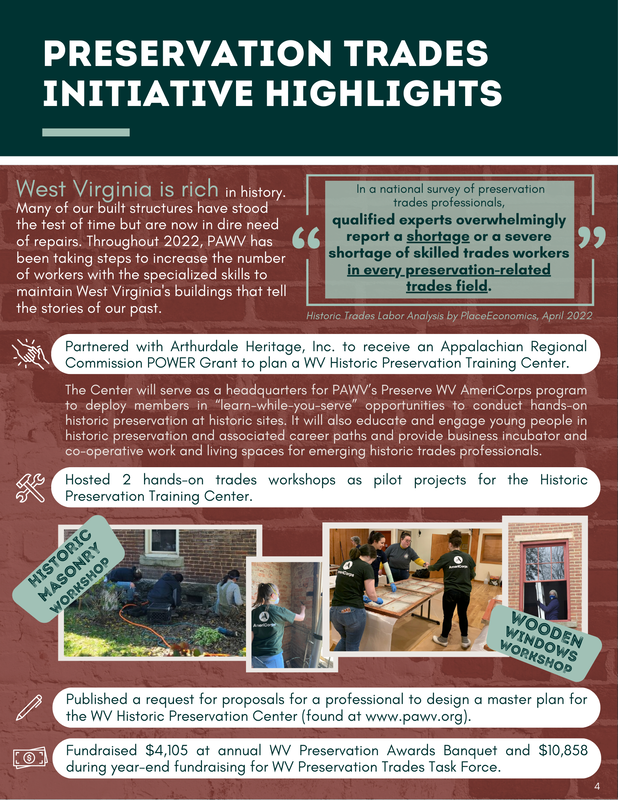
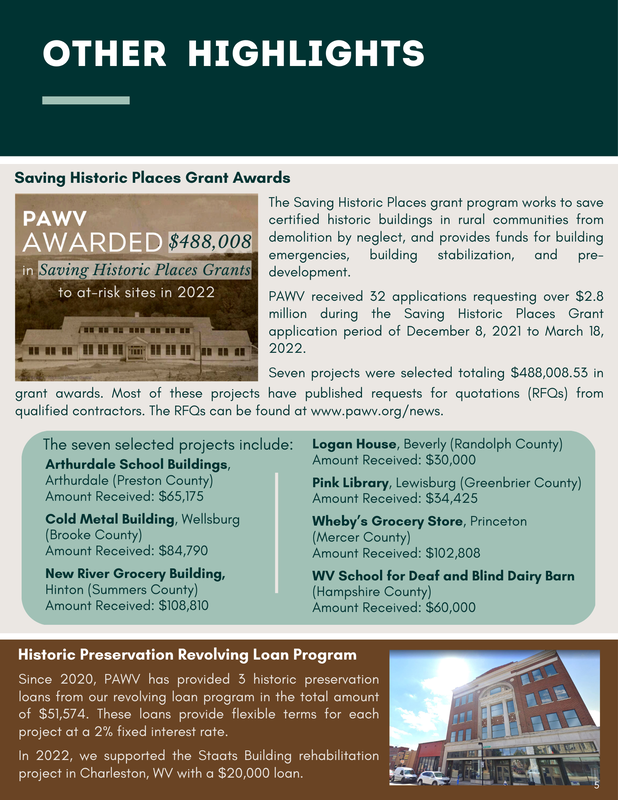
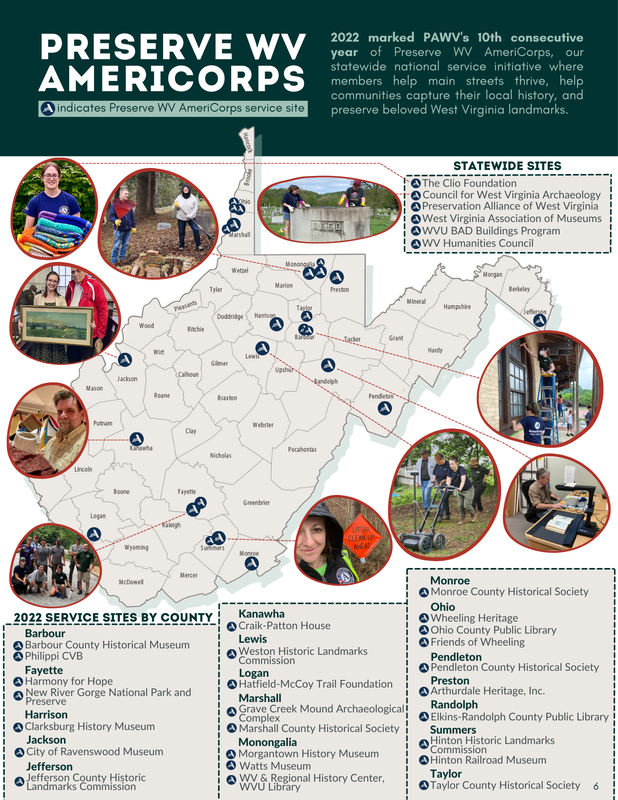
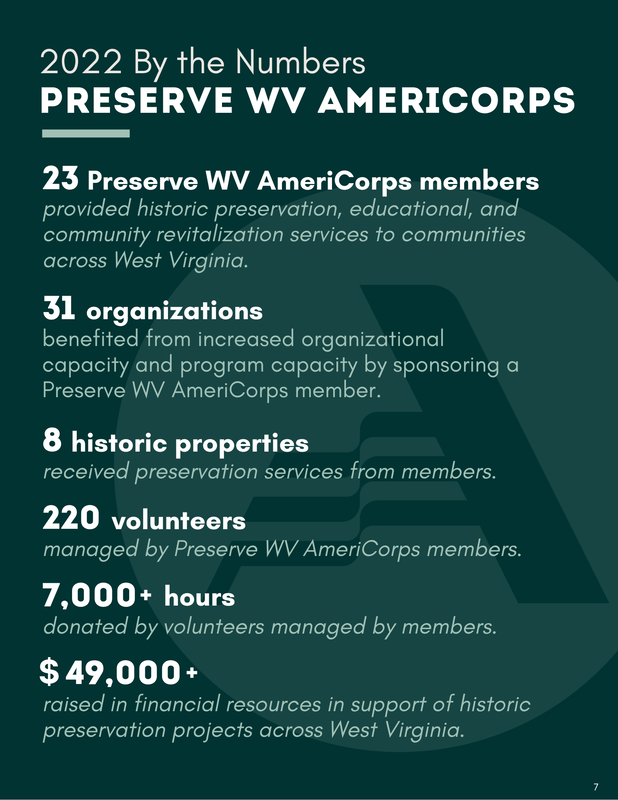

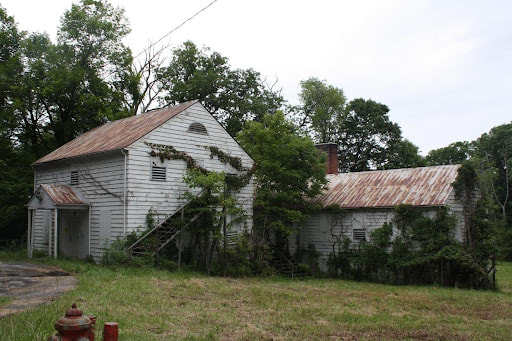
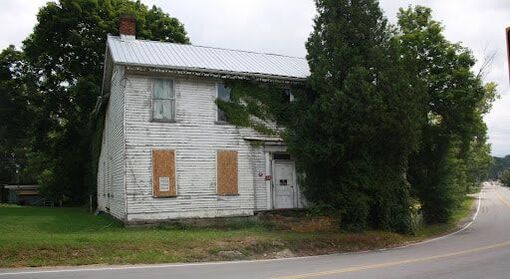
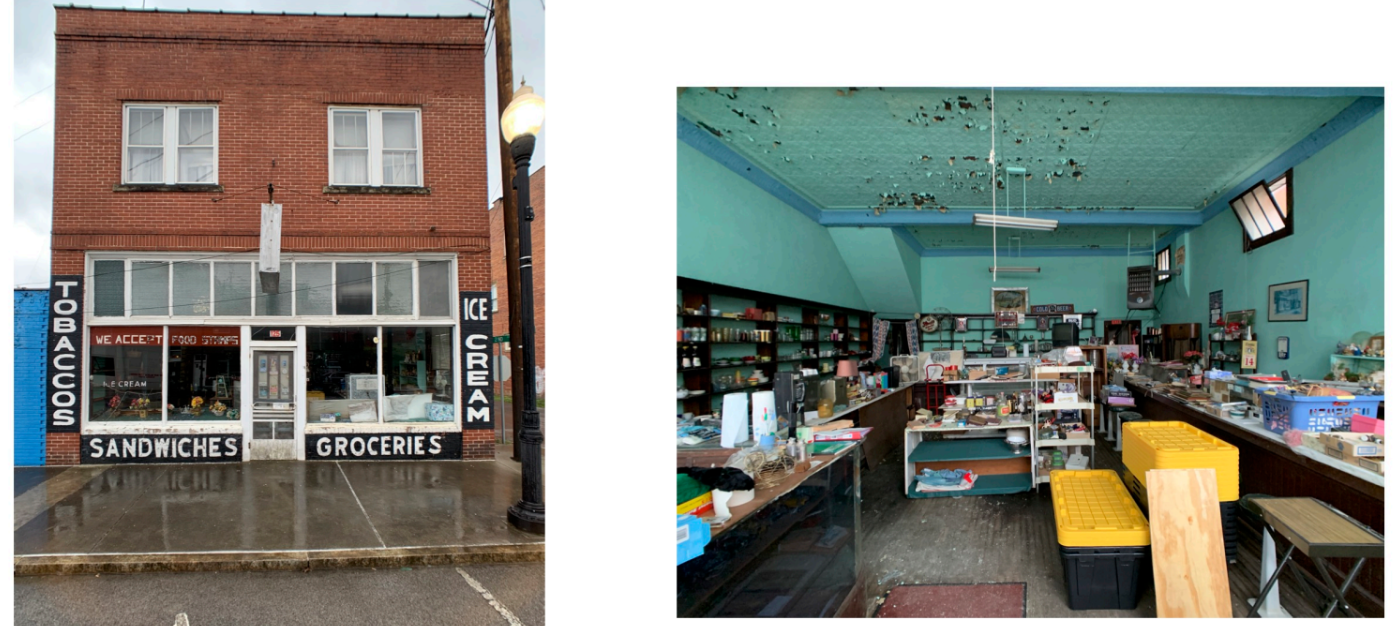
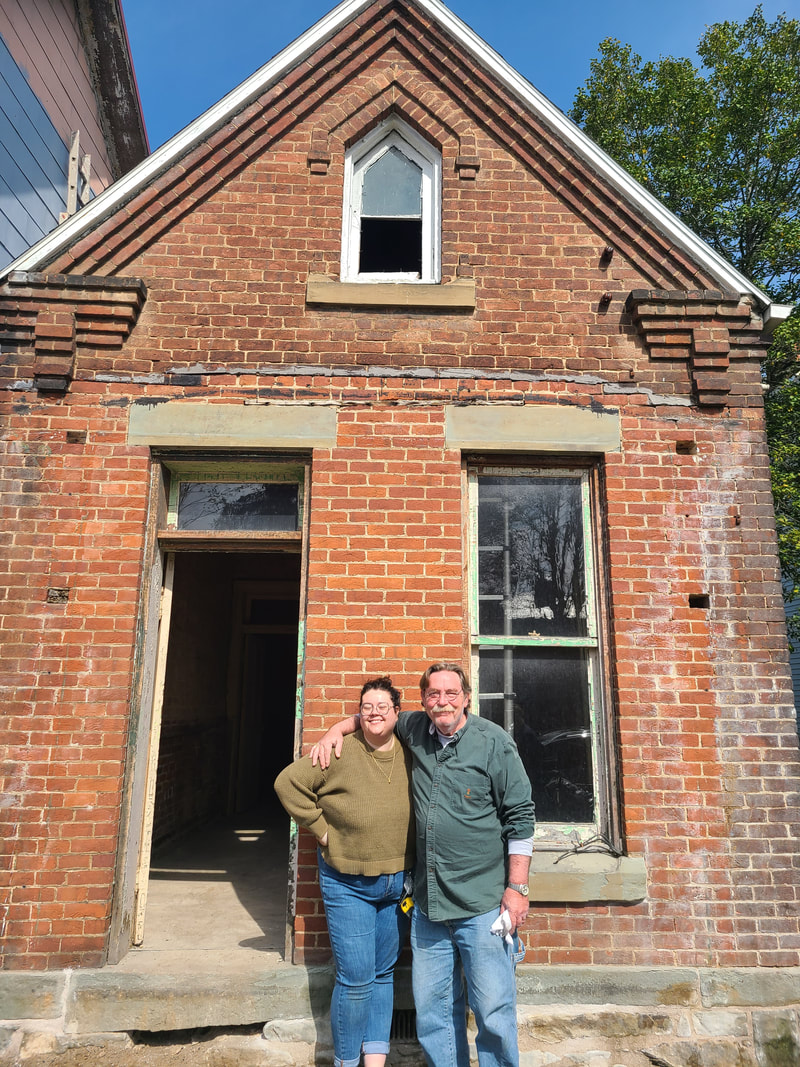
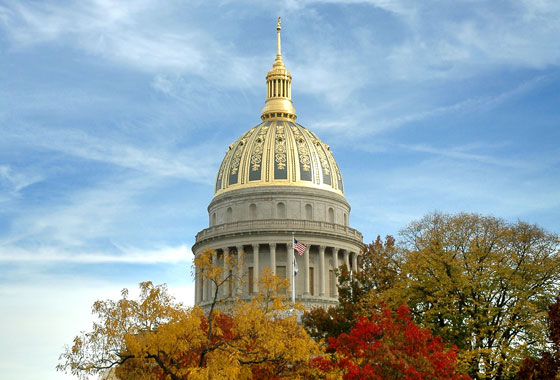
 RSS Feed
RSS Feed



